- 注册
- 登录
- 小程序
- APP
- 档案号


MVRDV · 2023-09-27 10:38:59

图片 Image: © 夏至
深圳妇女儿童大厦的改造已经竣工,MVRDV将这座老旧的存量建筑改造成一座充满活力、色彩缤纷的摩天大楼,内设多种妇女儿童公共服务设施及酒店、餐饮等配套:这座综合功能的高层建筑囊括了儿童探索馆、图画书博物馆、婴幼儿托育、妇儿剧场、妇女展馆、家庭服务以及相关配套设施。 建筑以其色彩绚烂的外观,为深圳福田区带来耳目一新的地标。 更重要的是,这座 100 米高的改造项目为深圳正在兴起的“适应性再利用”城市更新风潮树立了重要的典范。
Construction on the MVRDV-designed Shenzhen Women & Children’s Centre is complete, transforming an old mixed-use tower into a vibrant and colourful skyscraper hosting a hotel and a wide range of facilities for the welfare of women and children: a library, an auditorium, a children’s theatre and “discovery hall”, as well as therapy rooms and offices for staff. With its colourful façade, the building is a refreshing presence in Shenzhen’s Futian district; more importantly, at 100 metres tall, the building sets an important precedent for repurposing buildings in a city that is soon to see a “great wave of adaptive reuse”.
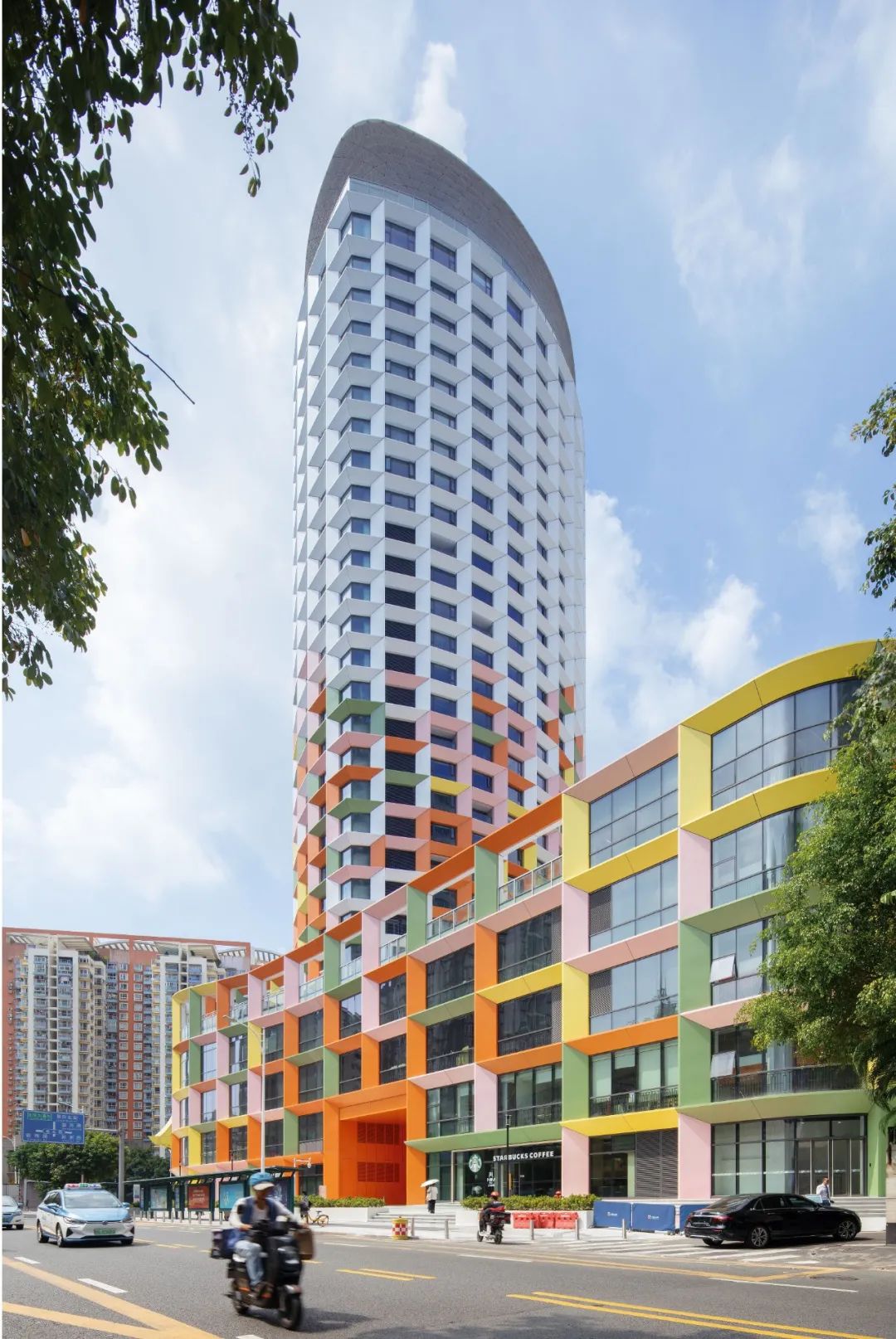
图片 Image: © 夏至

图片 Image: © 夏至
塔楼始建于 1994 年,彼时正逢深圳第一轮迅猛发展的时期,随着时代的发展和妇女儿童家庭需求的变化,塔楼外立面的环境效率日益落后于现代标准,内部的功能结构设计也难以满足新的需求,更有部分设施出现了老旧破损的情况。2019年,响应中国对 2030 年前实现碳达峰和 2060 年前实现碳中和的目标和承诺,妇儿大厦启动改造, 成为2022 年国家发改委盘活存量资产、扩大有效投资的24个典型示范案例之一。
The tower was originally completed in 1994, forming part of Shenzhen’s first period of explosive growth. The rushed approach to its original design was immediately clear: due to persistent fire safety concerns, the commercial units in the plinth were not opened until 2002, and the tower itself remained empty indefinitely. With the changing needs of the building’s users, it fell short of environmental requirements, and by 2019 it was clear that the building was no longer fit for purpose. Owing to China’s commitment to achieving carbon peaking (2030) and carbon neutrality (2060), the building was selected as one of 24 model examples of revitalisation by the National Development and Reform Commission.
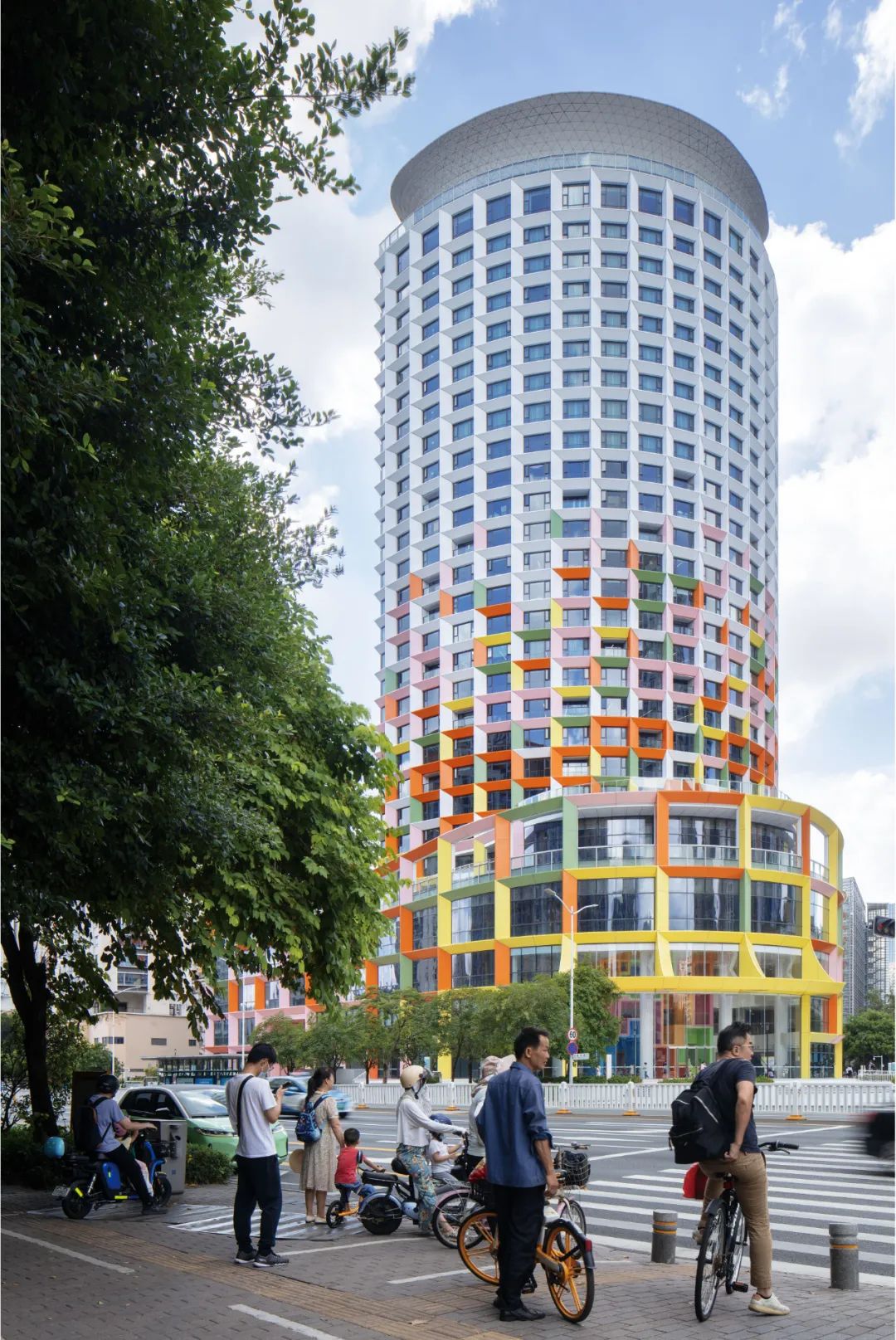
图片 Image: © 夏至

图片 Image: © 夏至
为了解决建筑本身的问题,MVRDV 采用全面的改造方案,重复利用建筑原有的结构,与拆除和重建相比,更具有可持续的价值。基于这一方案,建筑被赋予了新的立面系统: 彩色的网格框架为立面增加了近一米的深度,提供额外的遮阳、减少热量增益,内侧还设置了可打开的面板,实现了自然通风,提高使用者的舒适度,减少对空调的依赖。
To rectify the building’s problems, MVRDV designed a comprehensive transformation that would allow the building’s structure to be reused – a far more sustainable approach than demolishing and rebuilding. The most visible element of this transformation is the new façade: a grid of multi-coloured exterior frames increases the depth of the façade to a full metre. These frames provide extra shading to reduce thermal heat gain, and also incorporate openable panels on the inside that allow for natural ventilation – thus increasing occupants’ comfort and reducing the building’s reliance on air conditioning.
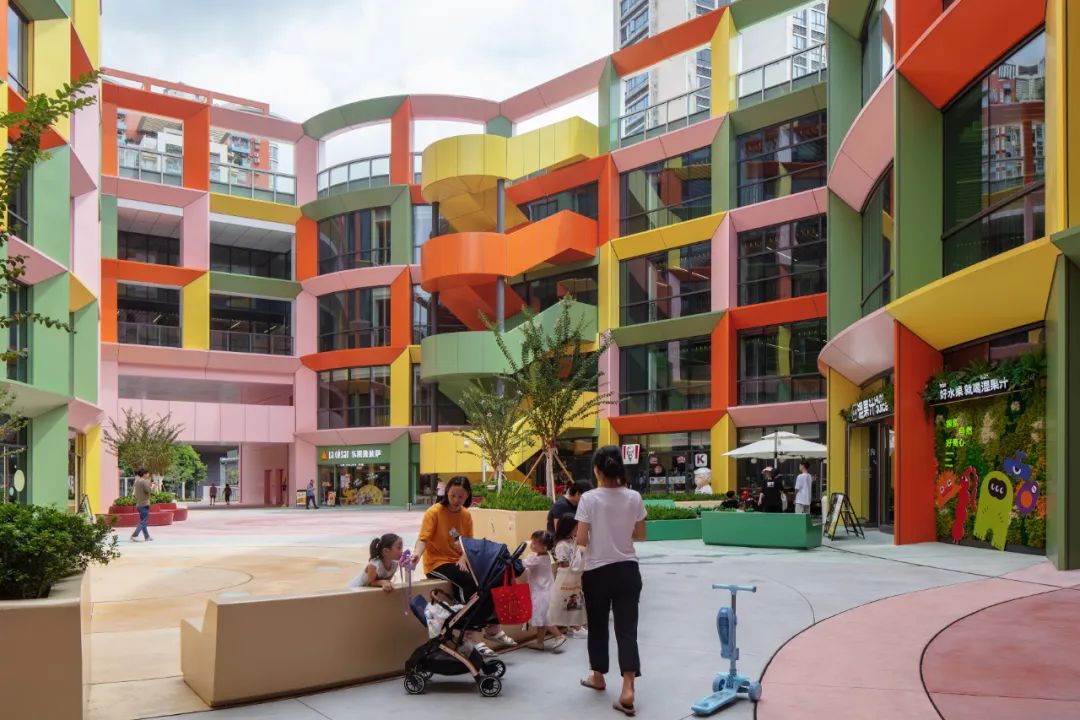
图片 Image: © 夏至

图片 Image: © 夏至
除了立面,MVRDV 还改变了原有建筑的多个元素。在建筑中增设大型无障碍露台,人们可以休憩或开展沙龙活动。原本用作停车场的庭院改造成了完全开放的公共空间,使环境更加友好,地铁的入口也从沿街区域移至大楼内部,强化了建筑与公共交通网络的联系,鼓励更加可持续的出行方式。 原有建筑包含约 24,000 立方米的混凝土,MVRDV 的改造保留了近 80%,重复利用所减少的碳排放相当于11,800 趟从阿姆斯特丹飞深圳的航班所产生的碳排放量。 MVRDV 还对原有的平面进行梳理和规整,创建了更加简单、高效的平面布局。
The design also transforms multiple elements of the building. The tower crown provides cover for a large accessible terrace offering a 360-degree panorama of the neighbourhood below. The courtyard, which was originally used for car parking, has been converted into a public space with a food court. The entrance to the city’s metro, which previously cluttered the pavement outside, has been moved inside the building to better connect it to public transit networks and reinforce the transition away from car-dependence. The transformation of the building was achieved while retaining 80% of the 24,000m3 of concrete that was originally in the structure, a reuse resulting in a carbon saving equivalent to 11,800 flights from Amsterdam to Shenzhen. Small additions to the structure were also made, filling in some of the original design’s awkward geometry to create simple, efficient floorplans.
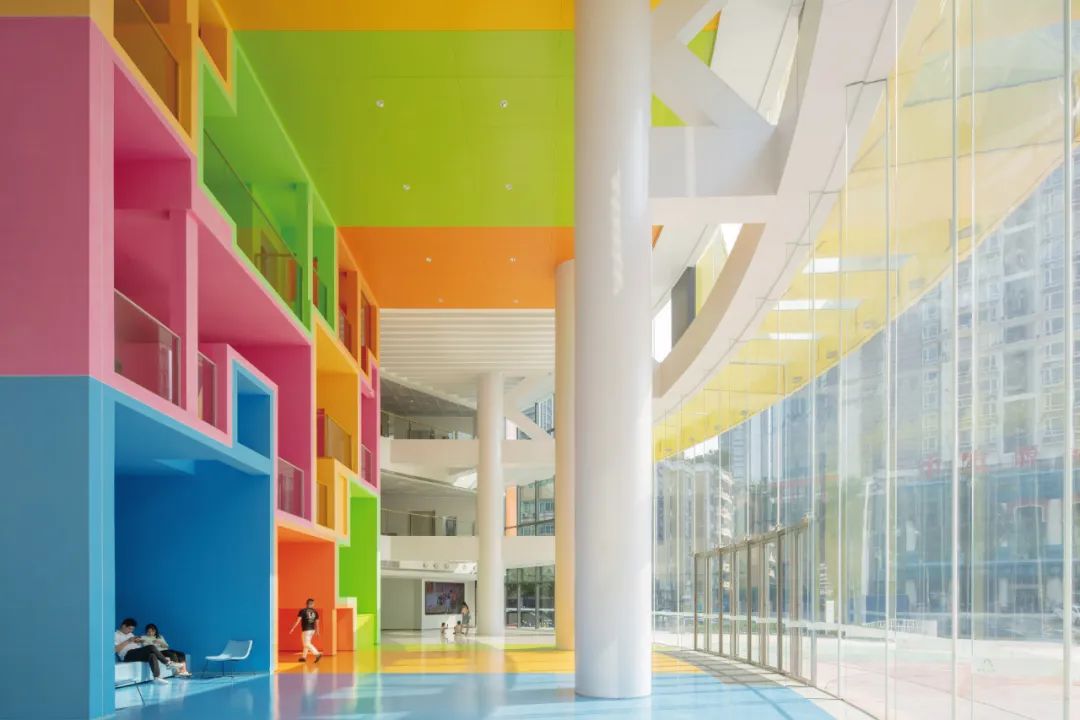
图片 Image: © 夏至
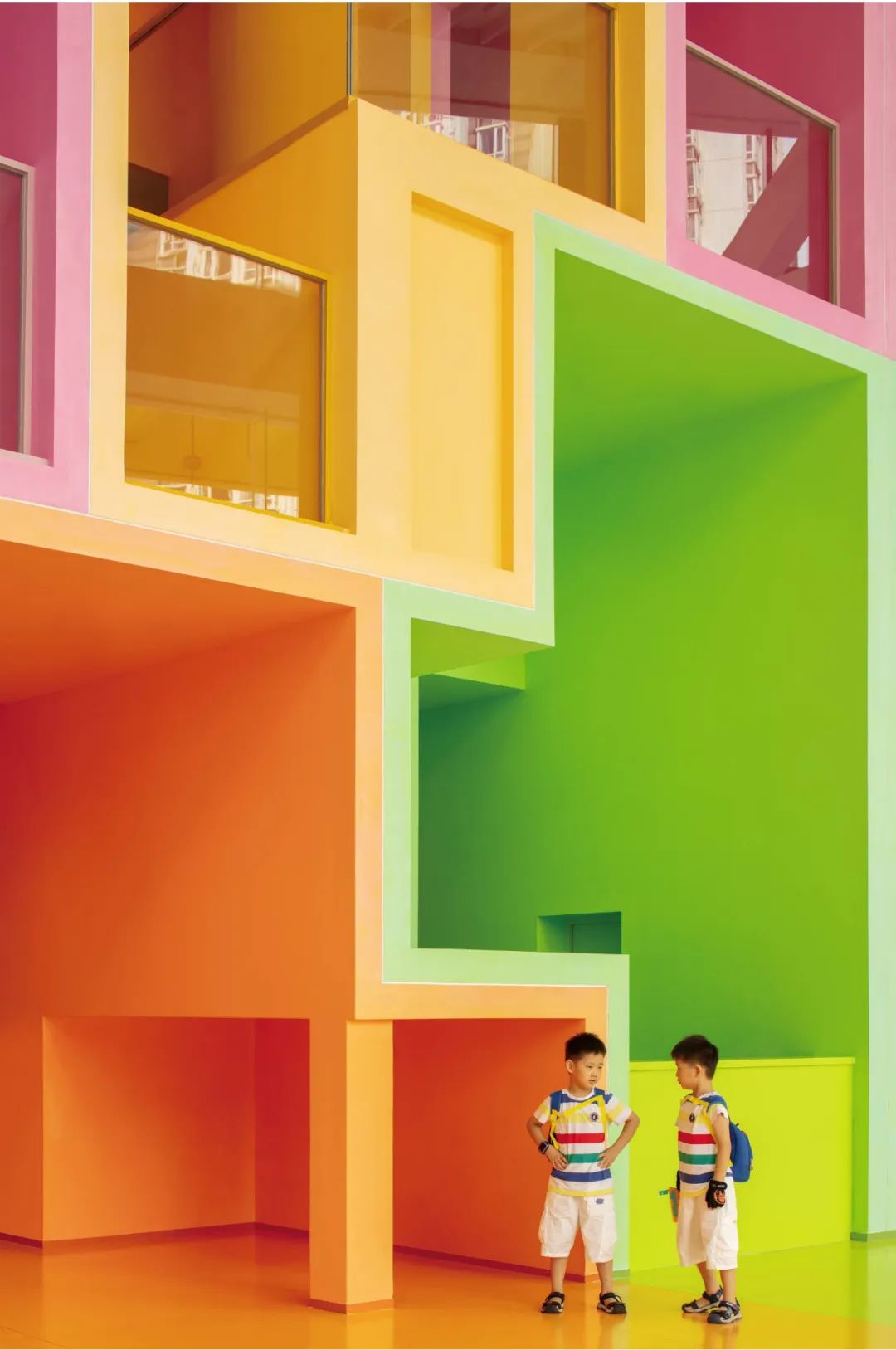
图片 Image: © 夏至
MVRDV 创始合伙人 Jacob van Rijs 表示: “深圳妇女儿童大厦可以成为深圳的一个开创性项目。随着城市的快速发展,现在有很多建筑在设计之初并没有真正考虑到较长的使用寿命。这在未来可能会导致大规模的拆除,或者,更加理想的状况下,会引发一波适应性再利用的浪潮。这个项目证明,即便是不够合理或者已经落后的结构,也能够进行重复使用,这样可以节省大量的混凝土,并减少数百万吨的碳排放。”
“The Shenzhen Women and Children’s Centre could be a pioneering project for Shenzhen”, says MVRDV founding partner Jacob van Rijs. “With the city’s fast-paced growth, many existing buildings were not really designed to have a long lifespan. That is a recipe for either an epidemic of demolition or, ideally, a great wave of adaptive reuse. Showing that even the most inadequate of these structures can be reused could save a crazy amount of concrete going to landfill – and eliminate millions of tonnes of carbon emissions that would have been created replacing that concrete.”

图片 Image: © 夏至

图片 Image: © 夏至
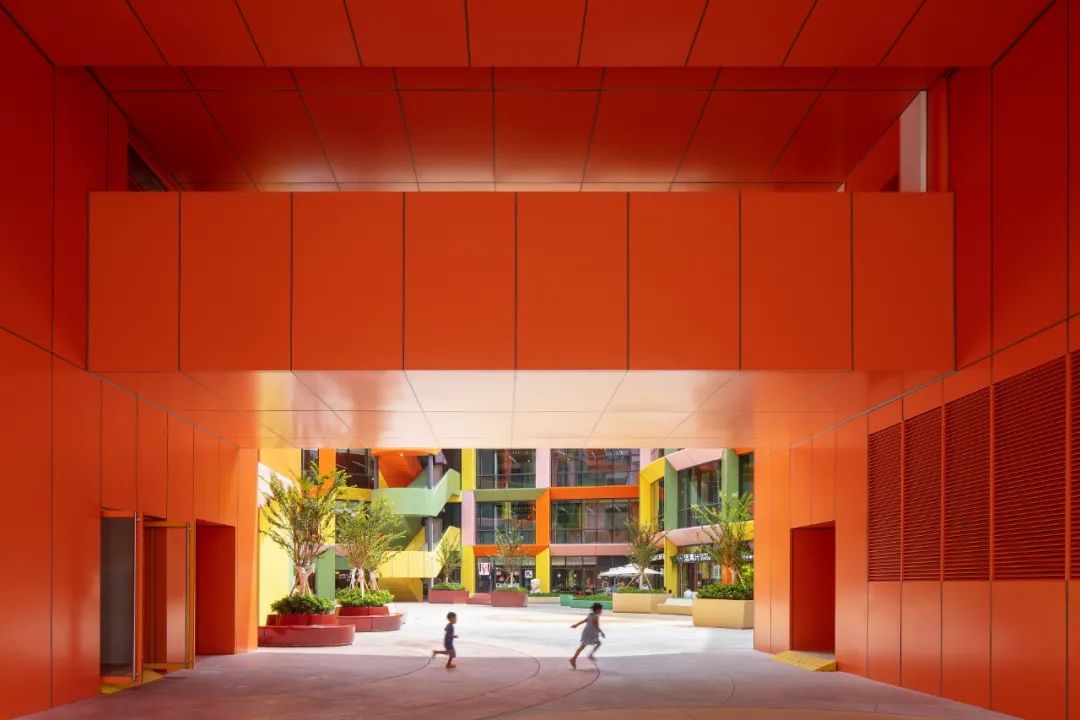
图片 Image: © 夏至
建筑立面系统采用的黄色、橙色、粉色和绿色也反映出建筑不同的功能空间。裙楼的丰富颜色传达出这栋大厦主要为妇女儿童服务的功能目的;塔楼的高层区域设置了酒店配套,采用了更加中性的白色立面。在地面层,建筑的四个主要入口采用了不同的颜色区别,各自发挥了引导作用,同时用欢乐的颜色和亲切的氛围欢迎来到这里的人们。
The colours of the façade – yellow, orange, pink, and green – help to communicate the building’s layout. The multicoloured plinth clearly advertises its function as a service centre for mothers and their children; on the tower, which hosts the hotel, these colours give way to a more neutral white. On the ground floor, the four primary entrances to the complex are each highlighted by a concentration of a different colour, making the building easy to navigate and welcoming to visitors.
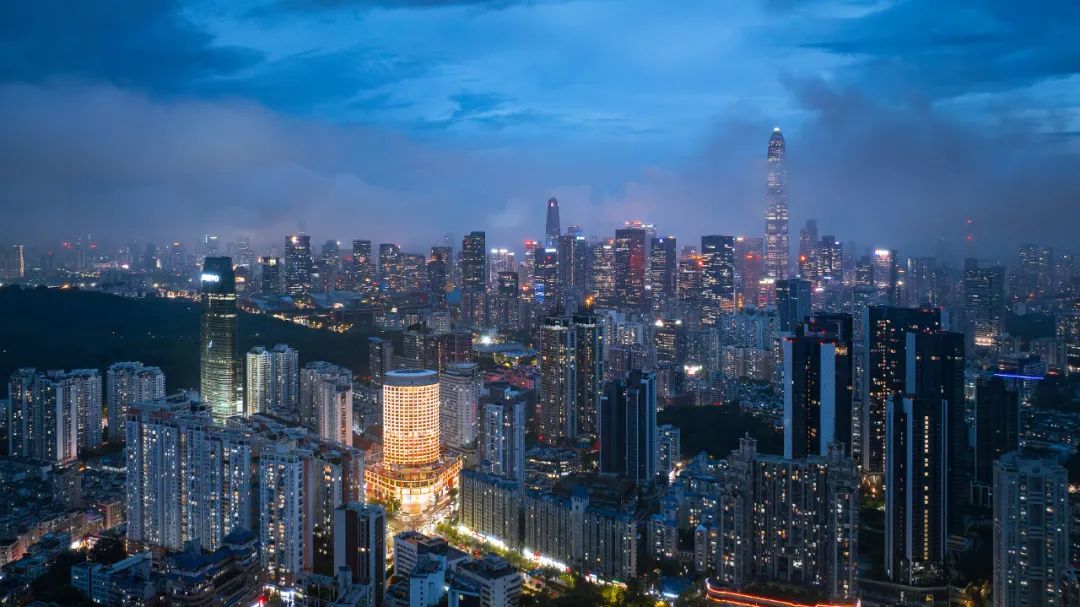
图片 Image: © 夏至

MVRDV建筑规划事务所由Winy Maas、Jacob van Rijs和Nathalie de Vries创立于荷兰鹿特丹,致力于为当代的建筑和都市问题提供解决方案。MVRDV的创作基于深度研究与高度协作,各领域的专家、客户及利益相关方从项目初期一直参与设计的全过程。直率而真诚的建筑、都市规划、研究和装置作品堪称典范,让城市和景观朝向更美好的未来发展。
MVRDV的早期项目,如荷兰公共广播公司VPRO的总部,以及荷兰阿姆斯特丹的WoZoCo老年公寓,都获得了广泛的国际赞誉。MVRDV250余位建筑师、设计师和城市规划师在多学科交叉的设计过程中,始终坚持严格的技术标准和创新性研究。MVRDV采用BIM技术,公司内拥有正式的BREEAM和LEED顾问。MVRDV与荷兰代尔夫特理工大学合作运营独立智库和研究机构The Why Factory,通过展望未来都市,为建筑及都市主义提供发展议程。
MVRDV was set up in 1993 in Rotterdam, The Netherlands by Winy Maas, Jacob van Rijs and Nathalie de Vries. MVRDV engages globally in providing solutions to contemporary architectural and urban issues. A research-based and highly collaborative design method engages experts from all fields, clients and stakeholders in the creative process. The results are exemplary and outspoken buildings, urban plans, studies and objects, which enable our cities and landscapes to develop towards a better future.
Early projects by the office, such as the headquarters for the Dutch Public Broadcaster VPRO and WoZoCo housing for the elderly in Amsterdam lead to international acclaim. 250 architects, designers and other staff develop projects in a multi-disciplinary, collaborative design process which involves rigorous technical and creative investigation. MVRDV works with BIM and has official in-house BREEAM and LEED assessors. Together with Delft University of Technology, MVRDV runs The Why Factory, an independent think tank and research institute providing an agenda for architecture and urbanism by envisioning the city of the future.
特别声明
本文为自媒体、作者等档案号在建筑档案上传并发布,仅代表作者观点,不代表建筑档案的观点或立场,建筑档案仅提供信息发布平台。
14
好文章需要你的鼓励

 参与评论
参与评论
请回复有价值的信息,无意义的评论将很快被删除,账号将被禁止发言。
 评论区
评论区